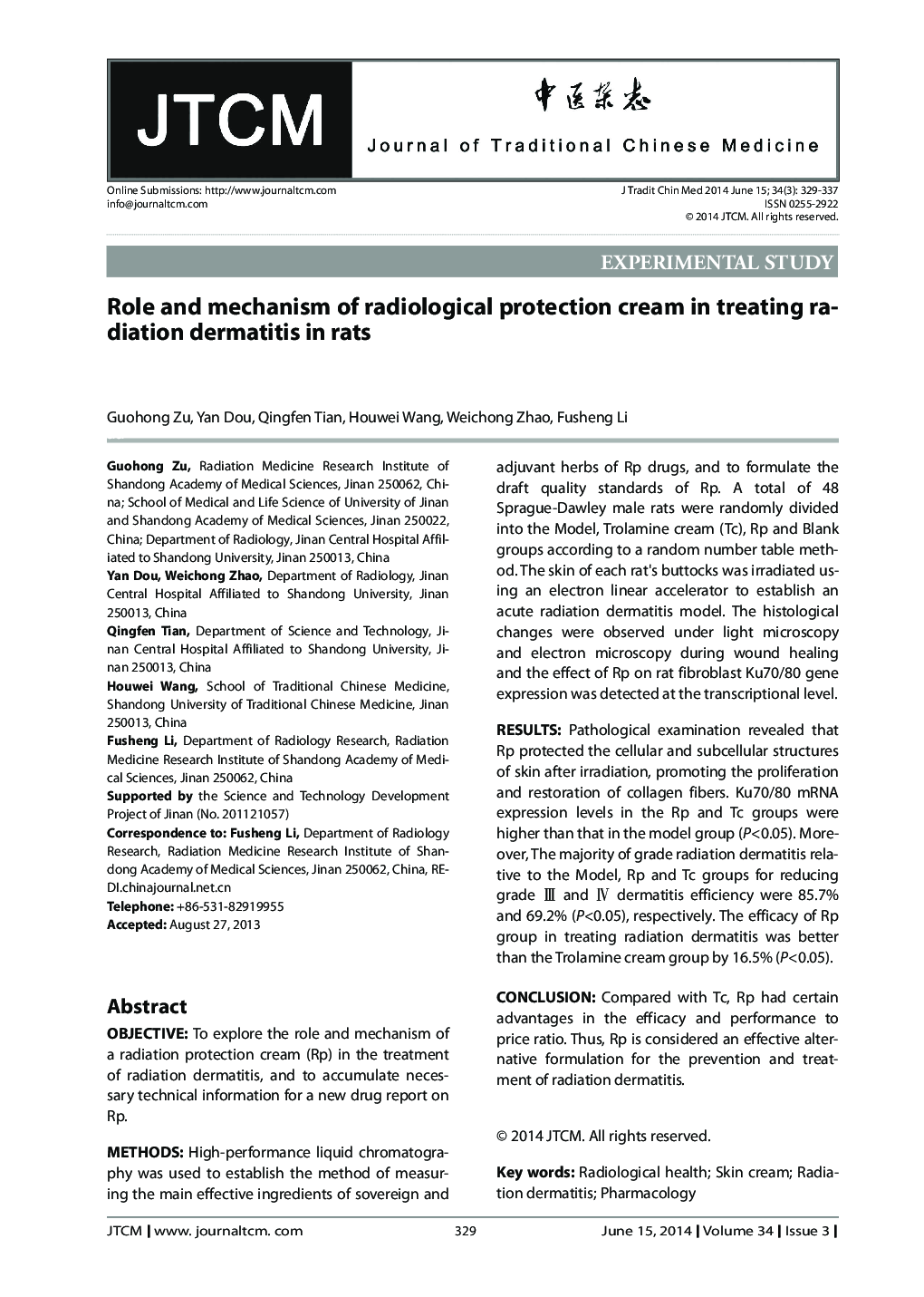| Article ID | Journal | Published Year | Pages | File Type |
|---|---|---|---|---|
| 4201068 | Journal of Traditional Chinese Medicine | 2014 | 9 Pages |
ObjectiveTo explore the role and mechanism of a radiation protection cream (Rp) in the treatment of radiation dermatitis, and to accumulate necessary technical information for a new drug report on Rp.MethodsHigh-performance liquid chromatography was used to establish the method of measuring the main effective ingredients of sovereign and adjuvant herbs of Rp drugs, and to formulate the draft quality standards of Rp. A total of 48 Sprague-Dawley male rats were randomly divided into the Model, Trolamine cream (Tc), Rp and Blank groups according to a random number table method. The skin of each rat's buttocks was irradiated using an electron linear accelerator to establish an acute radiation dermatitis model. The histological changes were observed under light microscopy and electron microscopy during wound healing and the effect of Rp on rat fibroblast Ku70/80 gene expression was detected at the transcriptional level.ResultsPathological examination revealed that Rp protected the cellular and subcellular structures of skin after irradiation, promoting the proliferation and restoration of collagen fibers. Ku70/80 mRNA expression levels in the Rp and Tc groups were higher than that in the model group (P<0.05). Moreover, The majority of grade radiation dermatitis relative to the Model, Rp and Tc groups for reducing grade III and IV dermatitis efficiency were 85.7% and 69.2% (P<0.05), respectively. The efficacy of Rp group in treating radiation dermatitis was better than the Trolamine cream group by 16.5% (P<0.05).ConclusionCompared with Tc, Rp had certain advantages in the efficacy and performance to price ratio. Thus, Rp is considered an effective alternative formulation for the prevention and treatment of radiation dermatitis.
